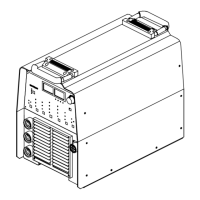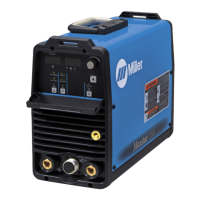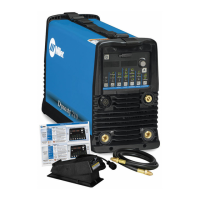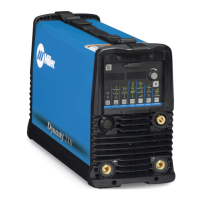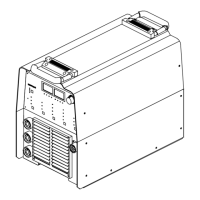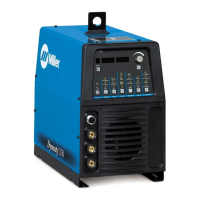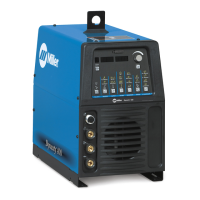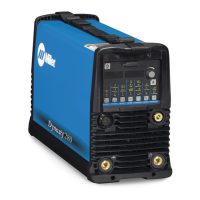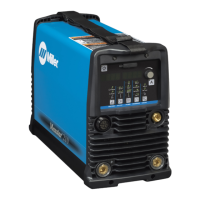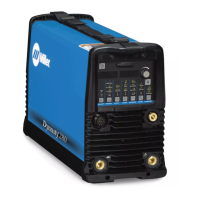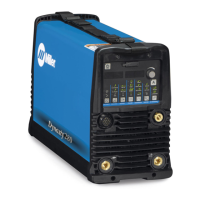What to do if cables and cords are cracked in Miller Dynasty 300 DX Welding System?
- AAntonio GeorgeAug 7, 2025
If you find cracked cables and cords on your Miller Welding System, repair or replace them.
What to do if cables and cords are cracked in Miller Dynasty 300 DX Welding System?
If you find cracked cables and cords on your Miller Welding System, repair or replace them.
Detailed description of hazards associated with arc welding processes like electric shock and fumes.
Technical specifications of the welding equipment, including power and output ratings.
Explanation of duty cycle limitations and how to prevent overheating.
Guidance on connecting output terminals and choosing appropriate weld cable sizes.
Information on input power requirements, wiring, and protection for safe operation.
How to set and adjust the welding amperage using the controls.
How to set custom start parameters for TIG welding processes.
How to configure torch trigger operations and output control modes.
Detailed explanation of the 3-step trigger method for precise weld control.
How to enable and manage lockout features to prevent unauthorized parameter changes.
Different lockout levels and their effect on parameter adjustability.
A guide to diagnosing and resolving common welding problems and errors.
Guidelines for proper installation to ensure effective HF operation and minimize interference.
Chart for selecting tungsten electrode diameter based on amperage, polarity, and gas.
Procedures for grinding and preparing tungsten electrodes for optimal arc performance.
Proper torch and electrode positioning techniques for effective TIG welding.
Step-by-step guide for starting the arc using Lift-Arc and HF methods.
Chart to select electrodes and appropriate amperage settings based on application.
Identification and causes of common defects in stick weld beads.
Characteristics of desirable weld beads and best practices.
Identifying causes and corrective actions for porosity in weld beads.
Identifying causes and corrective actions for excessive spatter during welding.
Identifying causes and corrective actions for incomplete fusion in welds.
Identifying causes and corrective actions for insufficient weld penetration.
Identifying causes and corrective actions for excessive weld penetration.
Identifying causes and corrective actions for burn-through during welding.
Identifying causes and corrective actions for distortion in welded materials.
| Brand | Miller |
|---|---|
| Model | Dynasty 300 DX |
| Category | Welding System |
| Language | English |
